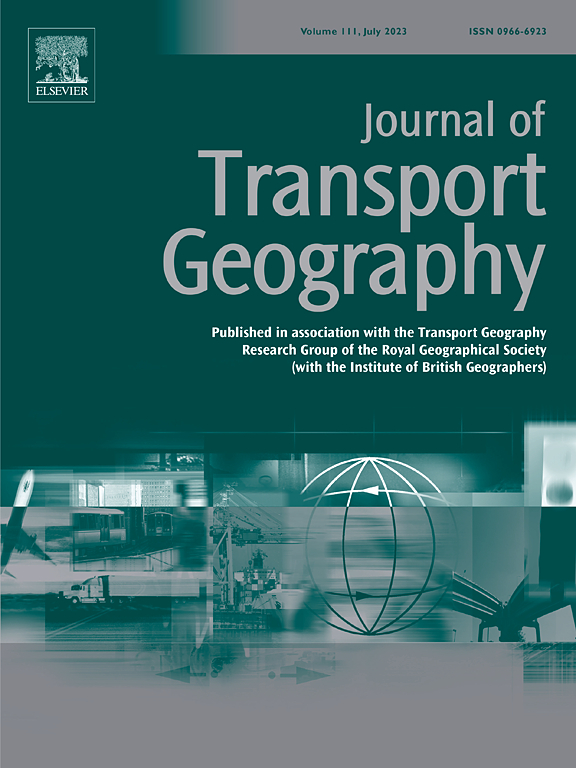Impacts of weather-related road closures on daily habitual travel in North Carolina
IF 5.7
2区 工程技术
Q1 ECONOMICS
引用次数: 0
Abstract
Weather-related road closures have the potential to cause serious impacts to society by disrupting road network function. Impacts to the population are variable based on the temporal and spatial extent of the closures, as well as the ability of the road network to absorb the impacts of closures by offering suitable alternative routes. In general, analyses of the impacts of weather-related road closures have focused on short-term, major events, such as hurricanes. There has been little focus on the ability for weather-related disruptions of varying size and severity (from localized tree fall to major hurricanes) to cause cumulative impacts to the population over longer time scales. This analysis considers daily impacts to free-flow travel time by employing an adjusted graph theory approach that also considers demand to more effectively analyze travel time impacts. In particular, this study uses mobility data to determine “habitual travel” for each census block group in the state, which allows for consideration of weather-related travel time impacts based on regularly occurring trips. We conduct a case study in North Carolina over the period of 2016–2023. Results indicate that although major events (such as Hurricane Matthew and Florence) represent the days with the most intense travel time disruptions, much of the state has experienced more than 30 days of travel-time disruption due to weather-related closures. Ultimately, rural areas of the state, especially the southeast coastal plain and the far western area of the state, emerge as the most impacted regions, which exposes potential vulnerabilities, especially considering the expected increase of weather-related road closures due to climate change.
与天气有关的道路封闭对北卡罗来纳州日常习惯性出行的影响
与天气有关的道路关闭可能会破坏道路网络的功能,从而对社会造成严重影响。对人口的影响因关闭的时间和空间范围以及道路网络通过提供合适的替代路线吸收关闭影响的能力而异。一般来说,与天气有关的道路关闭的影响分析主要集中在短期的重大事件上,如飓风。人们很少关注与天气相关的不同规模和严重程度的干扰(从局部树木倒伏到大型飓风)在较长时间范围内对人口造成累积影响的能力。本分析采用调整后的图论方法,同时考虑需求,以更有效地分析旅行时间的影响,从而考虑每日对自由流动旅行时间的影响。特别是,本研究使用流动性数据来确定该州每个人口普查街区组的 "惯常出行",这样就可以根据经常出现的出行来考虑与天气相关的旅行时间影响。我们在 2016-2023 年期间对北卡罗来纳州进行了案例研究。结果表明,虽然重大事件(如飓风马修和佛罗伦萨)对旅行时间的影响最为严重,但该州大部分地区因天气相关的关闭而造成的旅行时间中断超过 30 天。最终,该州的农村地区,尤其是东南沿海平原和最西部地区,成为受影响最严重的地区,这暴露了潜在的脆弱性,尤其是考虑到气候变化导致的与天气相关的道路关闭预计会增加。
本文章由计算机程序翻译,如有差异,请以英文原文为准。
求助全文
约1分钟内获得全文
求助全文
来源期刊

Journal of Transport Geography
Multiple-
CiteScore
11.50
自引率
11.50%
发文量
197
期刊介绍:
A major resurgence has occurred in transport geography in the wake of political and policy changes, huge transport infrastructure projects and responses to urban traffic congestion. The Journal of Transport Geography provides a central focus for developments in this rapidly expanding sub-discipline.
 求助内容:
求助内容: 应助结果提醒方式:
应助结果提醒方式:


